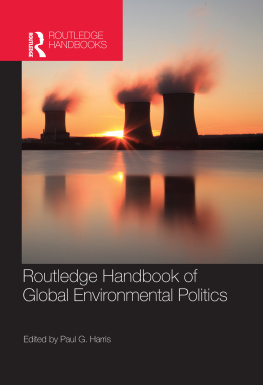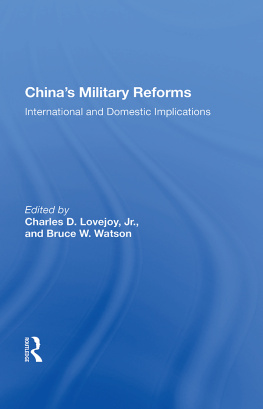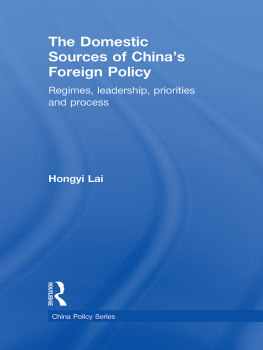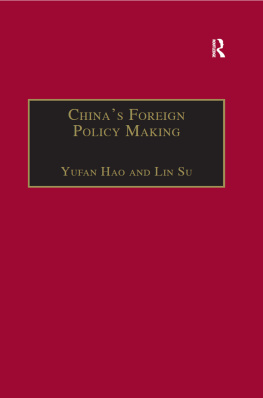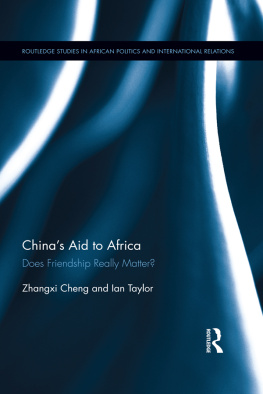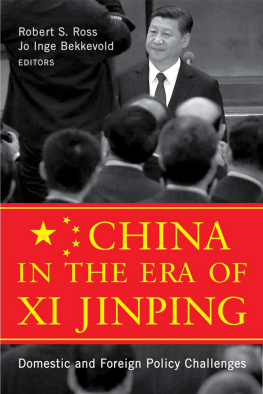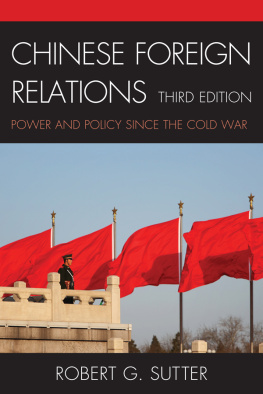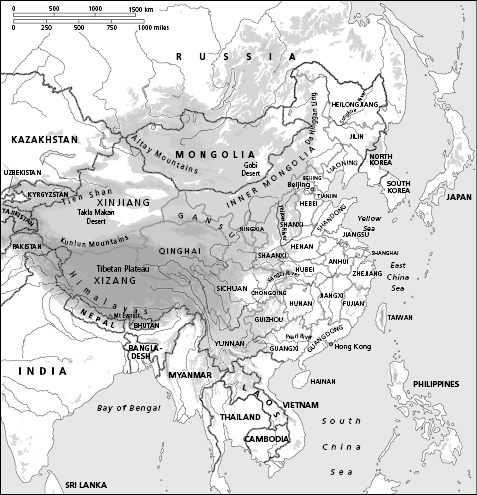
Table of Contents
China Today Series
Michael Keane, Creative Industries in China
Pitman Potter, China's Legal System
Xuefei Ren, Urban China
Judith Shapiro, China's Environmental Challenges
Copyright Stuart Harris 2014
The right of Stuart Harris to be identified as Author of this Work has been asserted in accordance with the UK Copyright, Designs and Patents Act 1988.
First published in 2014 by Polity Press
Polity Press
65 Bridge Street
Cambridge CB2 1UR, UK
Polity Press
350 Main Street
Malden, MA 02148, USA
All rights reserved. Except for the quotation of short passages for the purpose of criticism and review, no part of this publication may be reproduced, stored in a retrieval system, or transmitted, in any form or by any means, electronic, mechanical, photocopying, recording or otherwise, without the prior permission of the publisher.
ISBN-13: 978-0-7456-6246-6
ISBN-13: 978-0-7456-6247-3 (pb)
ISBN-13: 978-0-7456-8423-9 (epub)
ISBN-13: 978-0-7456-8422-2 (mobi)
A catalogue record for this book is available from the British Library.
The publisher has used its best endeavours to ensure that the URLs for external websites referred to in this book are correct and active at the time of going to press. However, the publisher has no responsibility for the websites and can make no guarantee that a site will remain live or that the content is or will remain appropriate.
Every effort has been made to trace all copyright holders, but if any have been inadvertently overlooked the publisher will be pleased to include any necessary credits in any subsequent reprint or edition.
For further information on Polity, visit our website: www.politybooks.com
To Pamela
Chronology
| 183942 | First Opium War |
| 185760 | Second Opium War |
| 18945 | First Sino-Japanese War |
| 19001 | Boxer Uprising |
| 1911 | Chinese Republican Revolution and the fall of the Qing dynasty |
| 1912 | Republic of China established under Sun Yat-sen |
| 1927 | Split between Nationalists (KMT) and Communists (CCP); civil war begins |
| 1931 | Japan invades Manchuria |
| 193745 | Second Sino-Japanese War: Japan invades China |
| 1937 | Nanjing massacre |
| 19459 | Chinese Civil War between the Nationalists (KMT) and Communists (CCP) |
| 1949 | Mao Zedong founds People's Republic of China (PRC), KMT retreats to Taiwan |
| 195053 | Korean War: North Korea invades South Korea |
| 19537 | First Five-Year Plan: PRC adopts Soviet-style economic planning |
| 1954 | First constitution of the PRC; first meeting of the National People's Congress |
| 1955 | Afro-Asian (Bandung) Conference |
| 1957 | Hundred Flowers Movement: Brief period of political debate followed by repressive Anti-Rightist Movement |
| 195860 | Great Leap Forward: Chinese Communist Party aims to transform agrarian economy through rapid industrialization and collectivization |
| 1959 | China invades Tibet; Dalai Lama flees to India |
| 195961 | Three Years of Natural Disasters, widespread famine with millions of deaths |
| 1960 | Sino-Soviet split |
| 1962 | Sino-Indian War |
| 1964 | First PRC atomic bomb detonation |
| 196676 | Great Proletarian Cultural Revolution and its Effects |
| 1971 | PRC regains UN seat and Security Council membership |
| 1972 | President Richard Nixon visits China; Shanghai Communiqu pledges to normalize USChina relations |
| 1976 | The Great Tangshan Earthquake: Largest earthquake of the twentieth century by death toll |
| 1976 | Death of Mao Zedong |
| 1976 | Ultra-leftist Gang of Four arrested and sentenced |
| 197889 | Democracy Wall Movement |
| 1978 | Introduction of one-child policy restricting married, urban couples to one child |
| 1978 | Deng Xiaoping assumes power; launches Four Modernizations and economic reforms |
| 1979 | US and China establish formal diplomatic ties |
| 1979 | PRC invades Vietnam |
| 1980 | China joins International Monetary Fund, World Bank |
| 1980 | Chins joins Conference on Disarmament |
| 1984 | Sino-British Joint Declaration agreeing return of Hong Kong to China in 1997 |
| 1989 | Tiananmen Square protests culminate in 4 June military crackdown |
| 1989 | Fall of the Berlin Wall |
| 1991 | Dissolution of the Soviet Union |
| 1992 | Deng Xiaoping's Southern Tour re-energizes economic reforms |
| 1992 | China accedes to Nuclear Non-Proliferation Treaty |
| 19932002 | Jiang Zemin President of PRC |
| 1996 | China signs the Comprehensive Nuclear Test Ban Treaty |
| 1996 | Missile crisis across the Taiwan Strait |
| 1999 | China initiates its going out overseas investment policy |
| 1999 | US missile hits Chinese embassy in Belgrade |
| 1999 | Falungong demonstrations in Beijing |
| 2001 | Collision of US EP3 surveillance plane and Chinese fighter plane |
| 2001 | China accedes to membership of World Trade Organization |
| 200212 | Hu Jintao President of PRC |
| 2003 | SARS outbreak |
| 2006 | First Forum on ChinaAfrica Cooperation |
| 2007 | China overtakes the US as world's biggest emitter of CO2 |
| 2008 | Sichuan earthquake |
| 2008 | Summer Olympic Games in Beijing |
| 2010 | Shanghai World Expo |
| 2010 | Google closes its self-censored mainland China search engine service |
| 2013 | Xi Jinping President of PRC |
Preface
This is a book about China's foreign policy. It is not about China as a whole. The distinction is important. To implement foreign policy, states need to deal bilaterally and multilaterally with a wide range of countries. With some they will be comfortable; with others there may be elements of moral distaste or a lack of trust. States need to be able to co-habit with both, even where warmth and mutual trust are lacking, if they are to pursue effectively their interests and maintain peace. Mao Zedong and Richard Nixon were prepared to deal with each other despite the fact that China had long seen Nixon as a warmonger and Americans did not trust Mao. Commonly, foreign policy involves dealing with people who think differently from us. Yet having been involved in international dealings with other countries over much of my career, I was often surprised by assumptions of colleagues that there is a similarity in how problems are seen and approached; or, at times, that others ought to think like us. Knowing not just where your counterparts differ, but understanding why they differ, facilitates handling of differences and makes cooperation possible.
Next page




